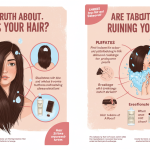Lustrous, healthy hair doesn’t happen by accident—it’s the result of a consistent, well-crafted routine tailored to your unique hair type, needs, and lifestyle. Whether you’re dealing with dryness, dullness, breakage, or just looking to up your hair game, building the perfect hair care routine is all about understanding your hair, using the right products, and applying a few expert-backed principles.
Thank you for reading this post, don't forget to subscribe!Let’s walk through the step-by-step process of creating a routine that leaves your hair nourished, protected, and glowing with health.
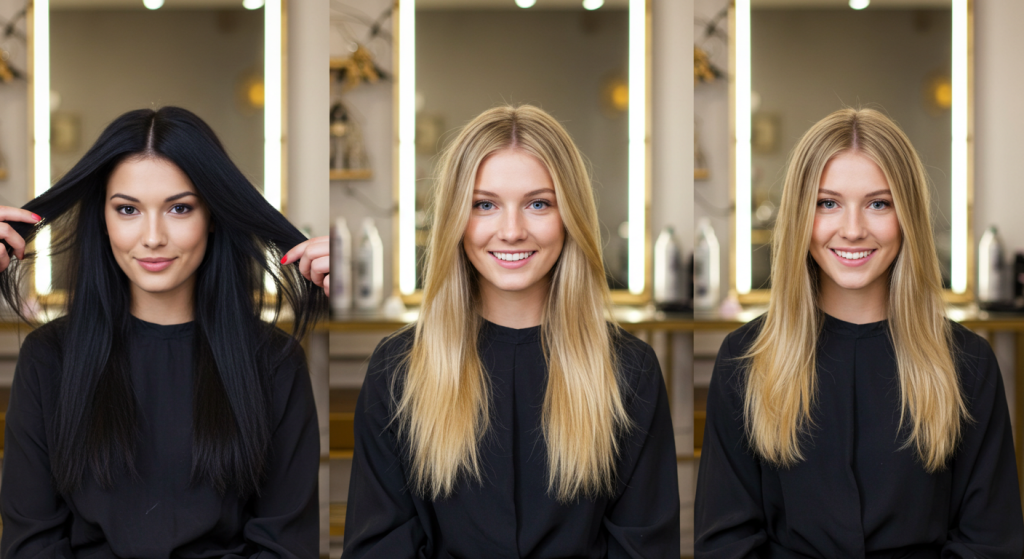
Step 1: Know Your Hair Type and Needs
Before anything else, you need to understand your hair’s specific characteristics:
- Texture: Straight, wavy, curly, or coily
- Thickness: Fine, medium, or thick
- Porosity: How well your hair retains moisture (low, normal, high)
- Scalp Type: Oily, dry, sensitive, or balanced
🔍 Why this matters: A routine for oily, fine hair is drastically different from one for thick, dry curls. Tailoring your products and steps accordingly is the key to real results.
Step 2: Cleanse — But Don’t Overdo It
Shampooing removes dirt, oil, sweat, and product buildup—but it can also strip away natural oils if done too often.
- How Often to Wash:
- Oily hair: Every 1–2 days
- Normal hair: Every 2–3 days
- Dry/curly hair: Once or twice a week
- Choose the Right Shampoo:
- Sulfate-free for sensitive scalps or color-treated hair
- Clarifying once a month to remove buildup
- Moisturizing for dry or damaged strands
💡 Pro Tip: Focus shampoo on your scalp, not your ends. Let the suds cleanse your lengths as you rinse.
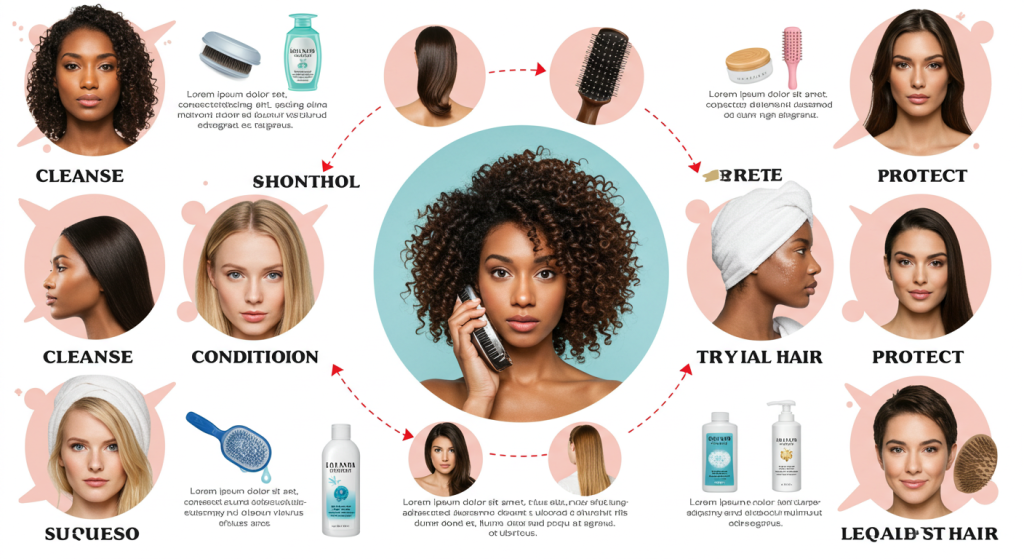
Step 3: Condition to Nourish and Detangle
Conditioning restores moisture and helps seal the hair cuticle, making strands smoother, shinier, and easier to manage.
- Use a Rinse-Out Conditioner: After every wash
- Apply From Mid-Length to Ends: Avoid the scalp unless it’s extremely dry
- Leave in for 2–5 Minutes: Let it soak in before rinsing
🧴 Curly Hair Hack: Use your conditioner as a detangler with a wide-tooth comb in the shower.
Step 4: Deep Condition Weekly
A once-a-week deep conditioning treatment helps restore moisture and repair damage. This is especially important for:
- Chemically treated or color-damaged hair
- Naturally curly or coarse hair
- Hair that’s frequently heat-styled
Choose masks or treatments with:
- Shea butter
- Coconut oil
- Argan oil
- Keratin or protein blends
💆 Boost the benefits: Wrap your hair in a warm towel or use a shower cap to help the product penetrate deeper.

Step 5: Lock in Moisture With Leave-In Products
Leave-in conditioners, serums, or sprays offer lightweight hydration, UV protection, and frizz control without weighing hair down.
- Fine Hair: Use lightweight sprays or mists
- Thick/Curly Hair: Opt for cream-based or oil-infused leave-ins
- Color-Treated Hair: Choose a leave-in with UV and heat protection
Step 6: Style Smart (and Gently)
Styling should enhance your hair’s health, not compromise it.
- Heat Protectant is a Must: Always use one before blow-drying, straightening, or curling
- Air Dry When You Can: Give your hair a break from heat
- Avoid Over-Brushing: Use wide-tooth combs or detangling brushes, especially on wet hair
- Low Manipulation Styles: Braids, buns, or twists can reduce stress on your strands
🎯 Goal: Maintain your style without compromising your hair’s integrity.
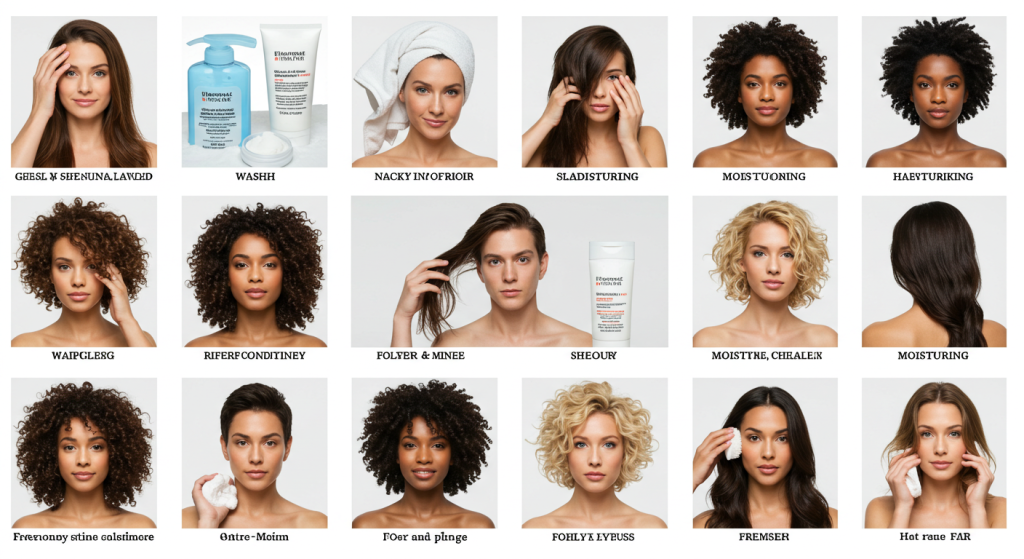
Step 7: Treat Your Scalp
A healthy scalp is the foundation of strong, shiny hair. Weekly scalp care can help improve circulation, reduce dandruff, and support hair growth.
- Exfoliate: Use a scalp scrub or a brush once a week
- Massage: Stimulates follicles and boosts blood flow
- Oil Treatments: Use tea tree, peppermint, or castor oil to soothe or strengthen the scalp
Step 8: Protect While You Sleep
Hair is more vulnerable to breakage and tangling while you sleep.
- Use a Silk or Satin Pillowcase: Reduces friction and frizz
- Wrap Your Hair: A silk scarf or bonnet protects your style and prevents moisture loss
- Try Protective Styles: Loose braids or buns reduce nighttime tangles
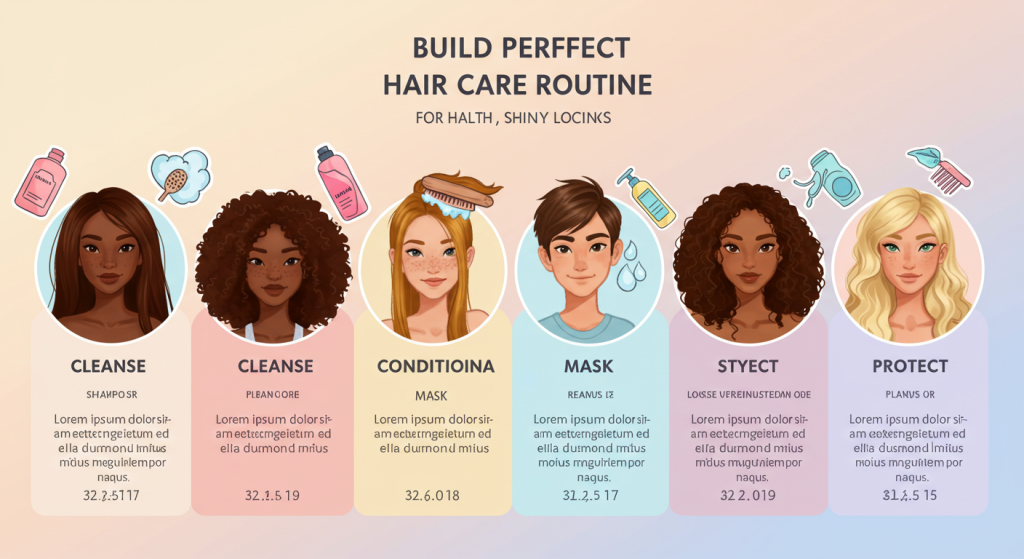
Step 9: Trim Regularly
Split ends can travel up the hair shaft and cause breakage if not managed.
- Trim Every 6–8 Weeks: Even a dusting helps maintain hair health
- Don’t Skip If You’re Growing Your Hair: Trimming prevents damage and encourages healthier growth
Step 10: Feed Your Hair from Within
Healthy hair starts with a healthy body. Your diet and lifestyle directly affect how your hair grows and shines.
- Hydrate: Drink plenty of water
- Eat Hair-Loving Nutrients: Focus on protein, iron, biotin, omega-3s, and vitamins A, C, D, and E
- Manage Stress: High cortisol levels can lead to hair shedding
🥗 Power Foods for Hair: Salmon, eggs, spinach, berries, avocados, nuts
Bonus: Customize with Seasonal Adjustments
- Summer: Use UV protection, hydrate more
- Winter: Focus on moisture, avoid static
- Fall/Spring: Refresh with trims and clarifying treatments

Final Thoughts: Build It. Stick With It. Adjust as Needed.
A great hair care routine isn’t about having a dozen expensive products. It’s about understanding your hair, giving it what it needs, and maintaining those habits consistently.
Don’t be afraid to experiment and evolve your routine—your hair changes with time, climate, and health. Listen to it, love it, and give it the care it deserves.
✨Quick Routine Recap:
- Cleanse: With the right frequency and shampoo
- Condition: Regularly and deeply
- Moisturize: With leave-ins and treatments
- Protect: From heat, friction, and damage
- Nourish: Through diet and healthy habits




